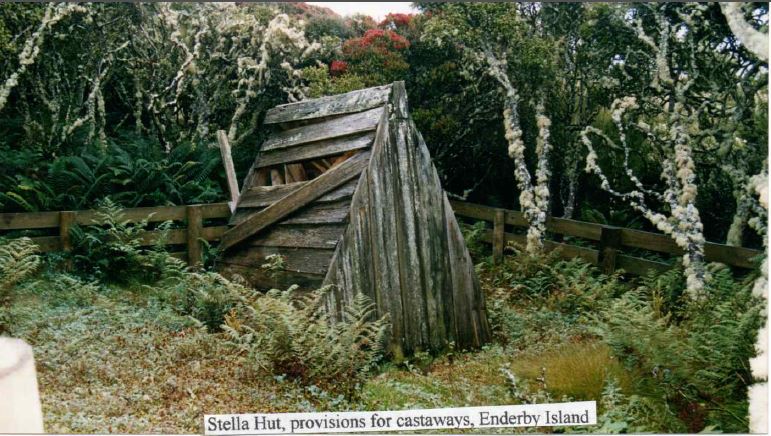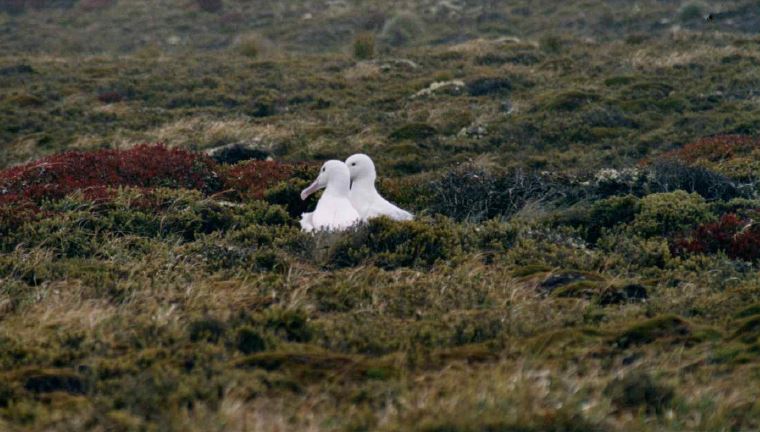- Author
- Letter Writer
- Subjects
- History - general, Letter to the Editor
- Tags
-
- RAN Ships
- None noted.
- Publication
- June 2022 edition of the Naval Historical Review (all rights reserved)
Having read about the Enderby family in the Journal (NHR March 2023) I feel I must let you know that I have visited Enderby Island. In 2005 I joined a group aboard the Russian icebreaker Kapitan Klebnikov which had been converted into an expedition ship. We sailed from Hobart for the Ross Sea to visit the huts of Scott and Shackleton. On our way south we went ashore at Macquarie Island and on our way back to Hobart we visited the Auckland Islands, going ashore on Campbell Island and Enderby Island. I have attached some of the photos I took at Enderby – one of the remains of an emergency store of food for any unhappy seafarer stranded at Enderby. The rata forest, one photo showing the colourful foliage, is able to withstand the climate and the royal albatross will allow inquisitive tourists to come up close. We were able to see some yellow eyed penguins found only there and also some of the rare Hooker seals. Hooker was the naturalist in the Challenger expedition in the 1870s.
Cheers,
John Ellis
By Editor:
Visitors to the New Zealand sub-Antarctic territories of the Auckland Islands (465 km from South Island) and another 290 km further south the Campbell Islands are few and far between. During WWII both islands were occupied by small meteorological teams who doubled as Coastwatchers. Those from Auckland Island were withdrawn in 1945 but a 10-man station remained on Campbell Island until 1995 when reporting became remotely controlled.
This conjures up scenes from the distant past as in 1964/65 I served in HMNZS Pukaki on Operation DEEP FREEZE conducting weather patrols down to the ice at 60 degrees south while US aircraft transited from Christchurch to McMurdo Sound in Antarctica. Based at Dunedin, we steamed due south through the Roaring Forties and Furious Fifties to the Shrieking Sixties. Nearer to the polar regions the wind often contracts and in ideal conditions we could be floating in a wonderland of ice which at night was magnificently illuminated by the aurora australis with its technicolored curtains of light extending from the heavens to the horizon.
On our way south we frequently called and anchored at Campbell Island taking supplies and mail to the Meteorological Station where we managed to get ashore for a brew and a yarn with these lonely souls. The beach was alive with elephant seals with the massive and dangerous bulls (which can grow to over five metres in length) guarding their harems. In fine weather it is possible to tramp those remote and picturesque hills, where birds do not take fright, and carefully stroke an albatross on her nest. And making back for the beach coming across old ‘try pots’ once hung above huge fires rendering valuable oil from whale and seal blubber. The large elephant seals were hunted almost to extinction but have now returned to healthy colonies.






